WORD FORMATION 1. Affixation. Classification of morphemes. Types

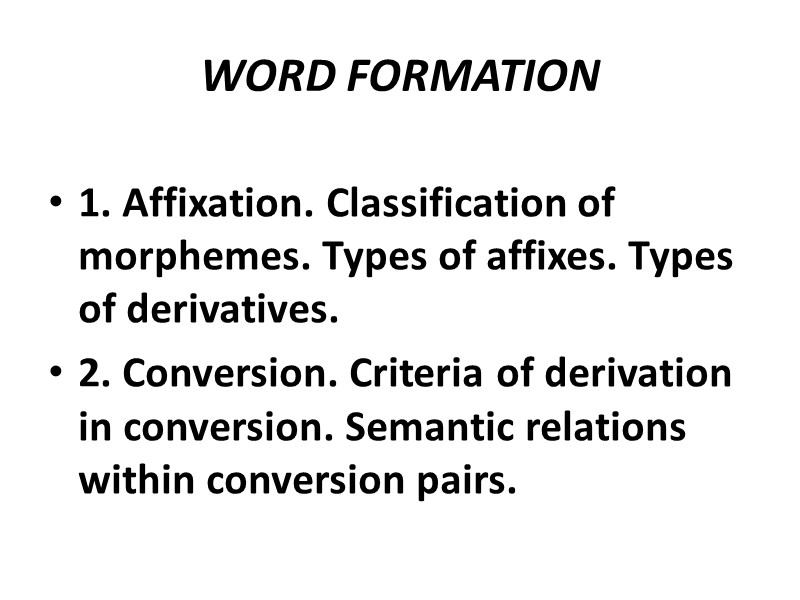
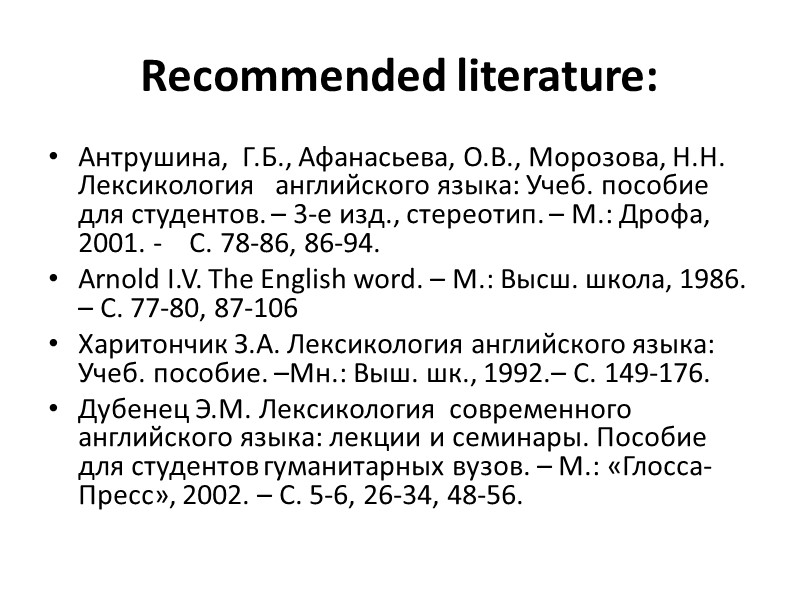
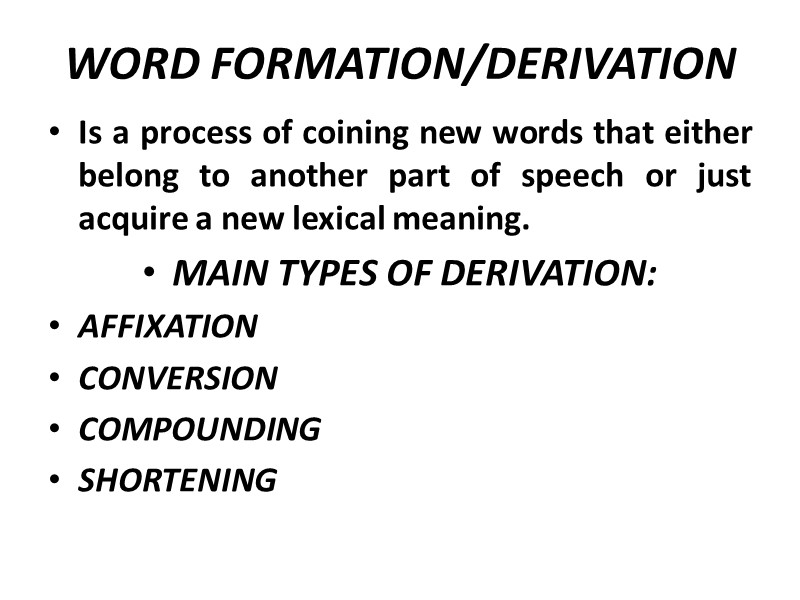
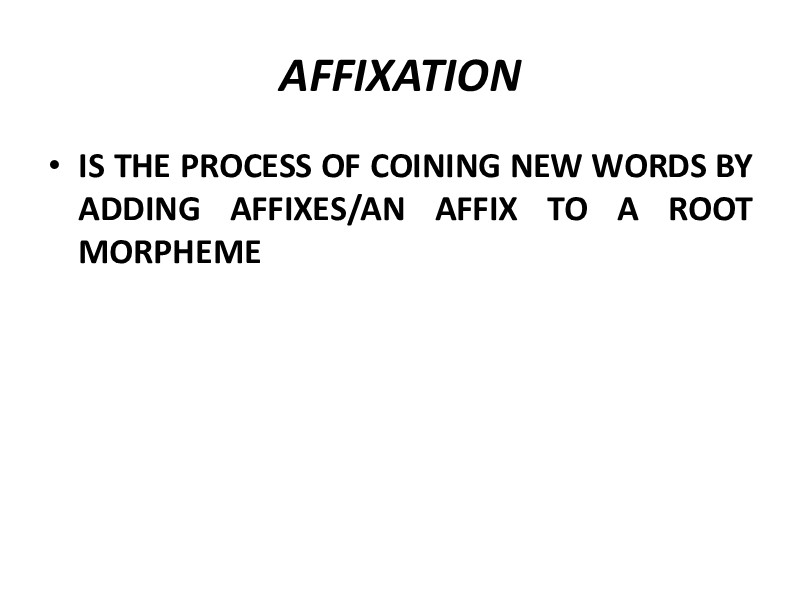
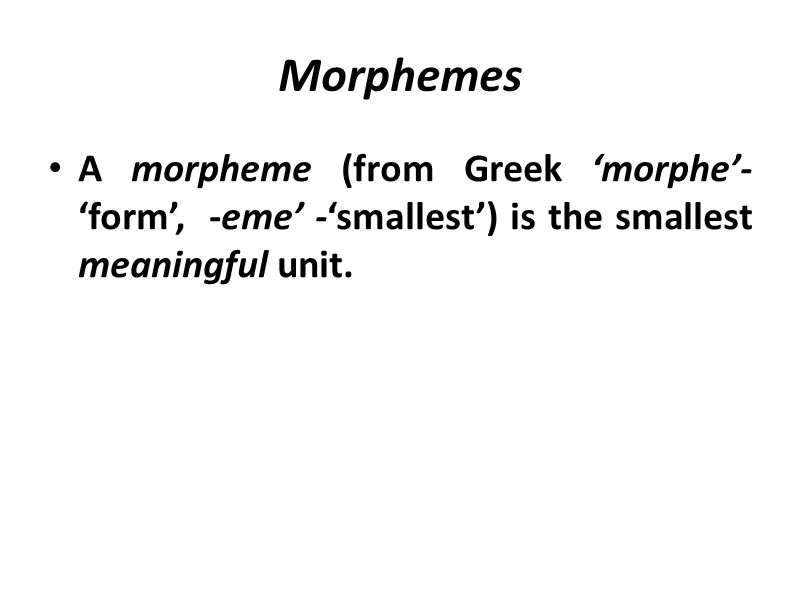
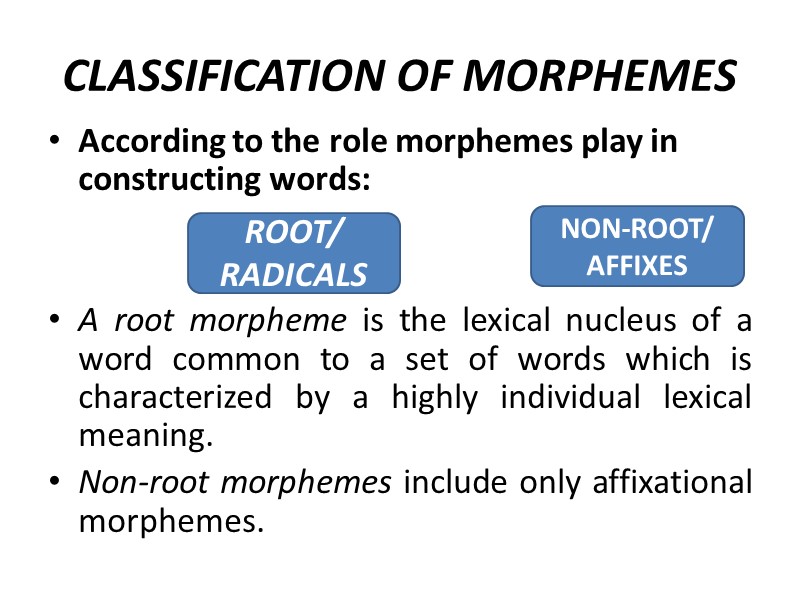
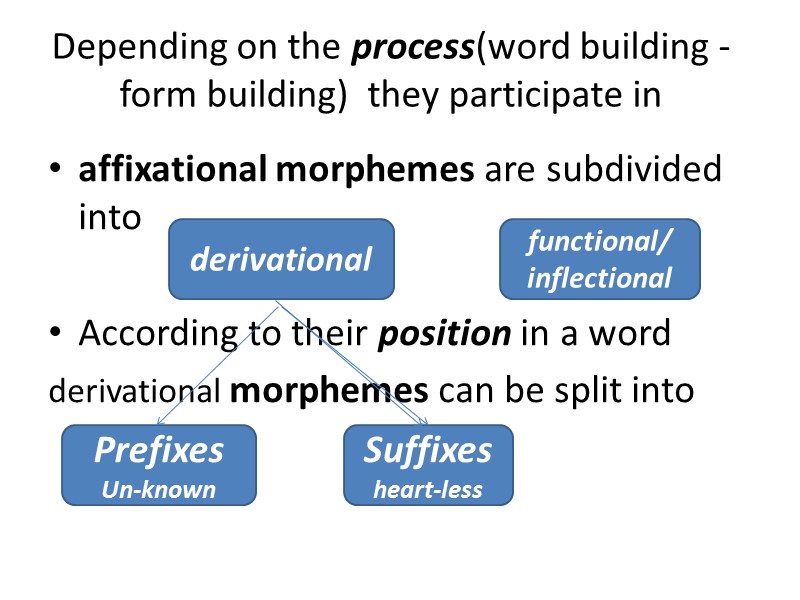
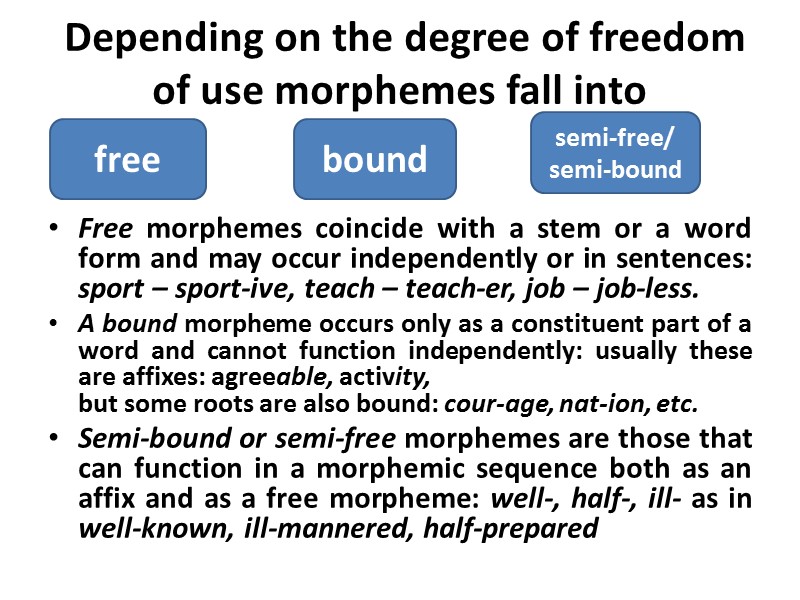
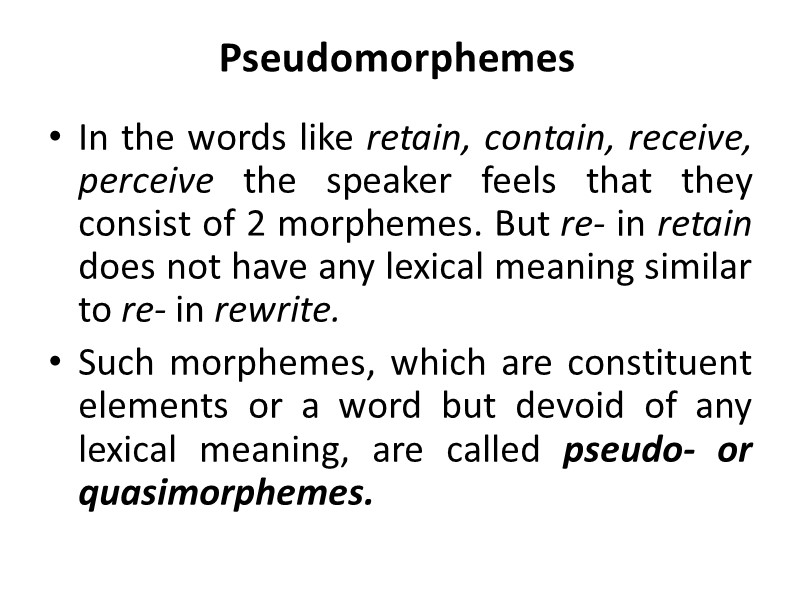
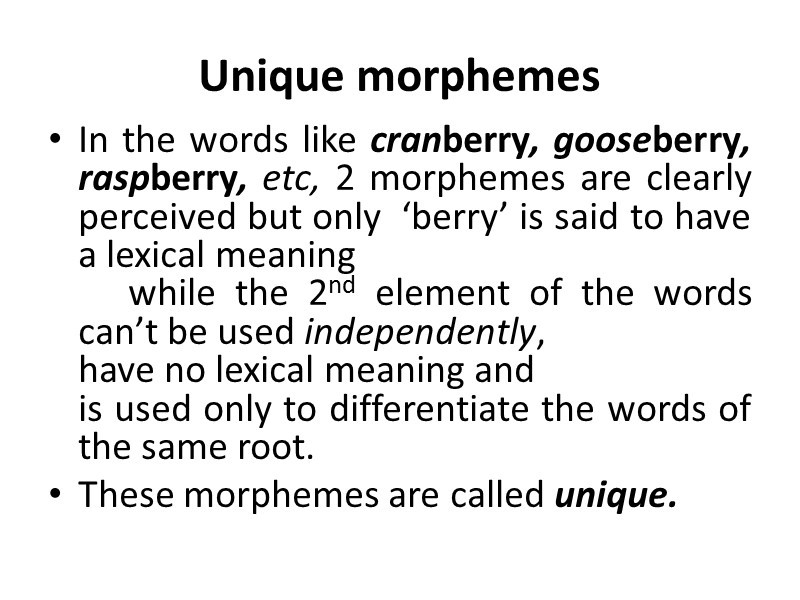
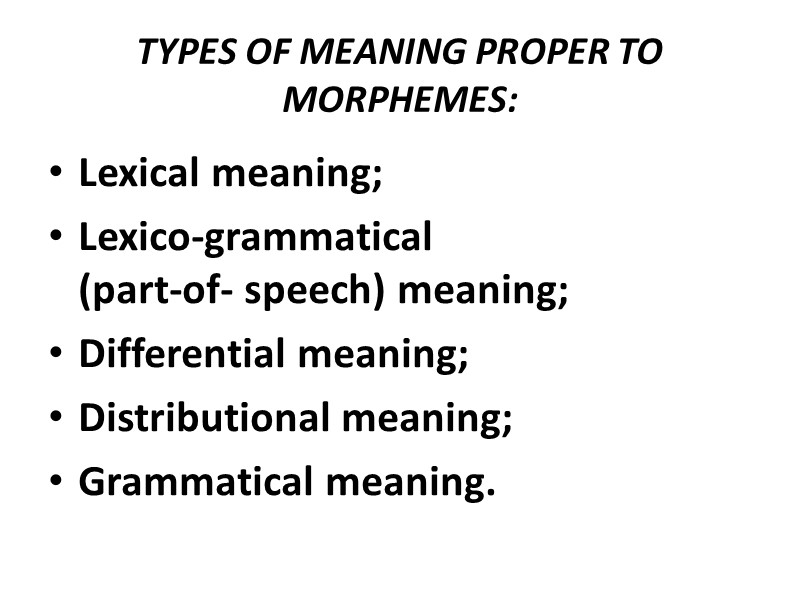
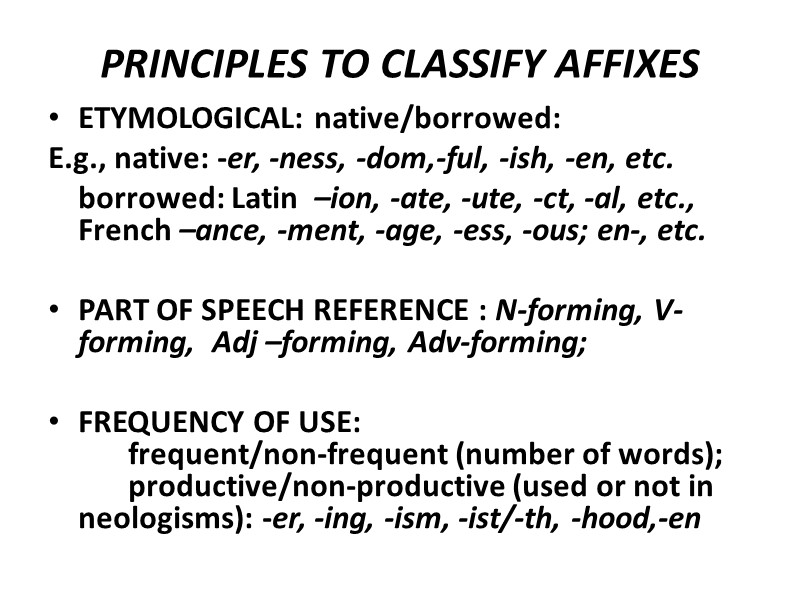
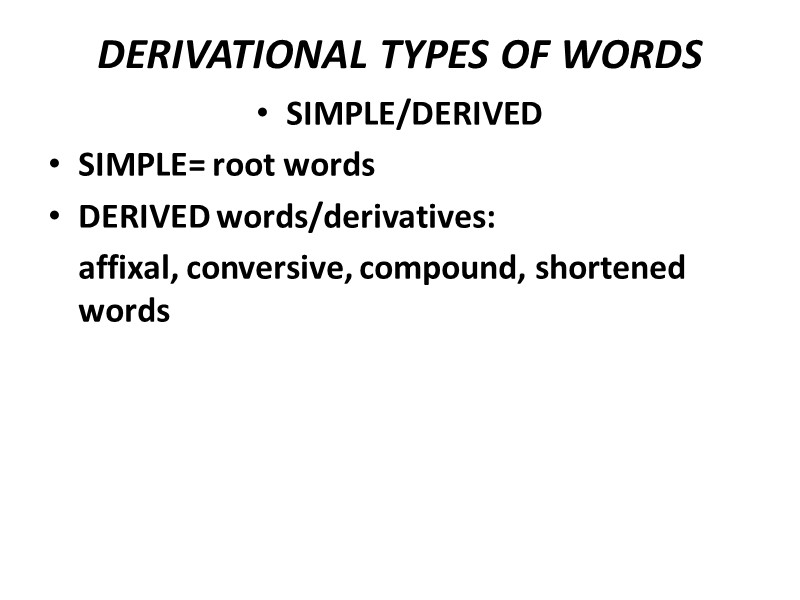
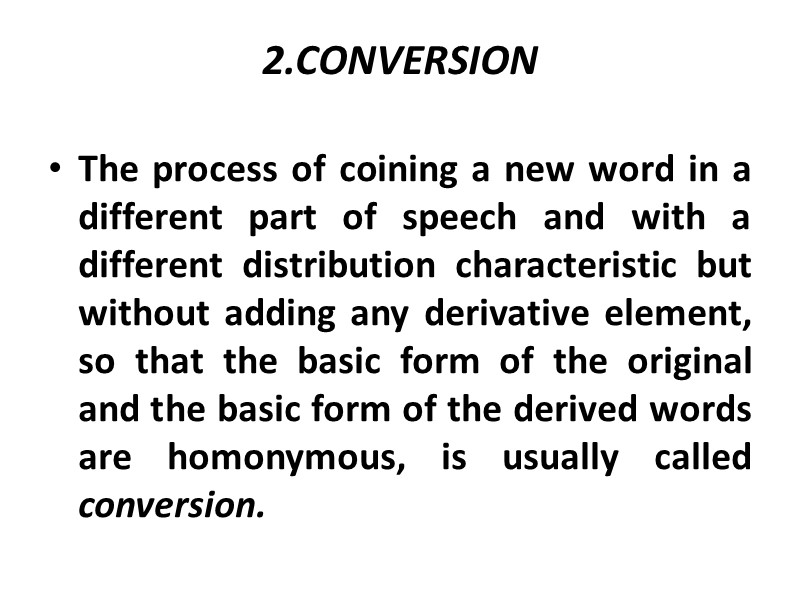
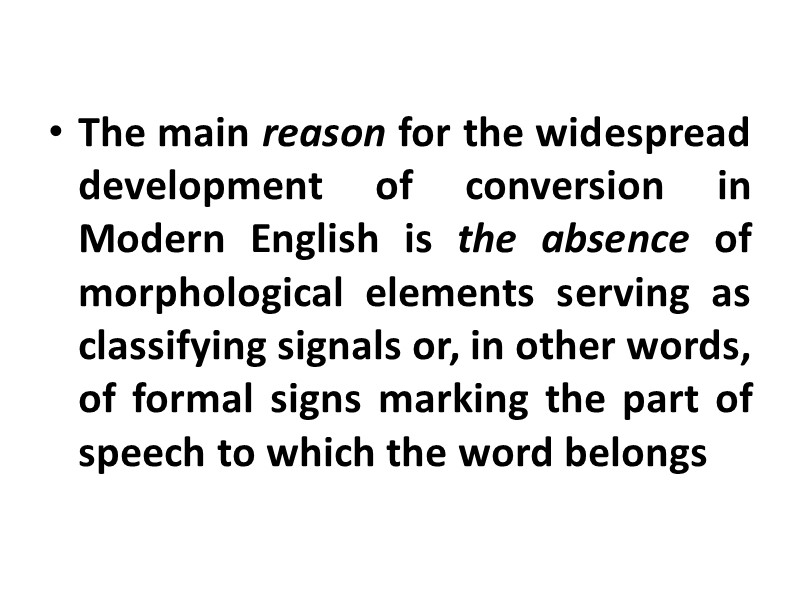
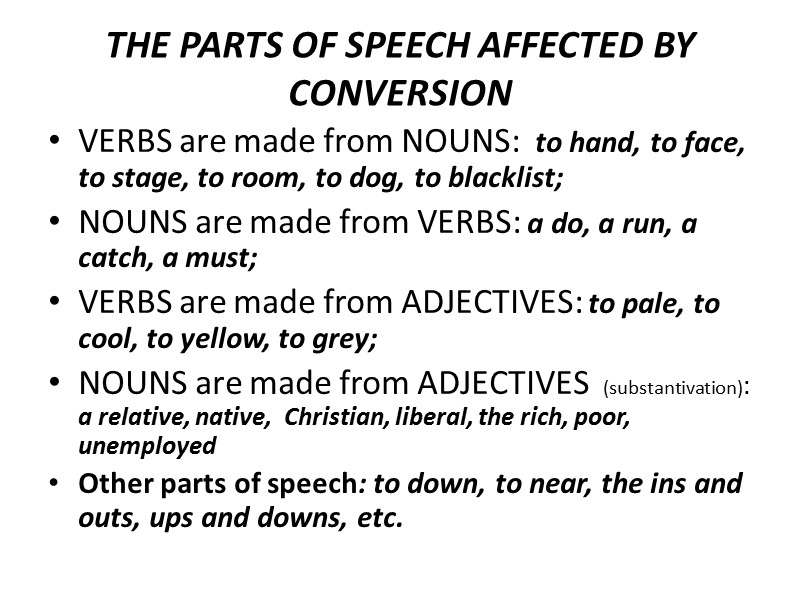
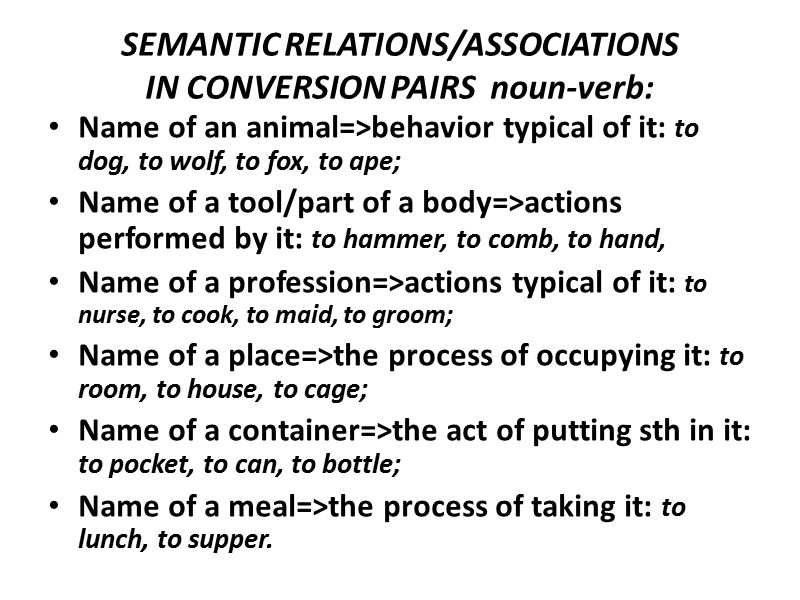
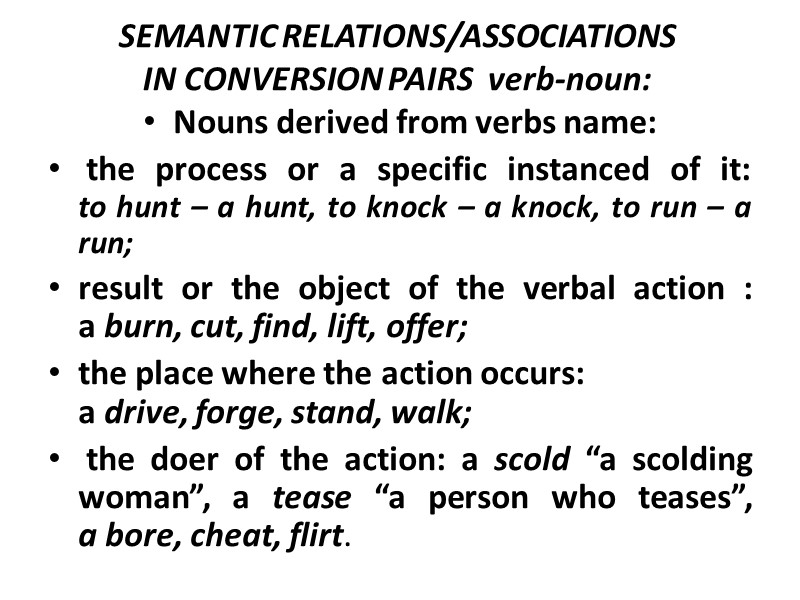
41206-lecture_6_word_formation.ppt
- Количество слайдов: 18
 WORD FORMATION 1. Affixation. Classification of morphemes. Types of affixes. Types of derivatives. 2. Conversion. Criteria of derivation in conversion. Semantic relations within conversion pairs.
WORD FORMATION 1. Affixation. Classification of morphemes. Types of affixes. Types of derivatives. 2. Conversion. Criteria of derivation in conversion. Semantic relations within conversion pairs.
 Recommended literature: Антрушина, Г.Б., Афанасьева, О.В., Морозова, Н.Н. Лексикология английского языка: Учеб. пособие для студентов. – 3-е изд., стереотип. – M.: Дрофа, 2001. - С. 78-86, 86-94. Arnold I.V. The English word. – M.: Высш. школа, 1986. – С. 77-80, 87-106 Харитончик З.А. Лексикология английского языка: Учеб. пособие. –Мн.: Выш. шк., 1992.– С. 149-176. Дубенец Э.М. Лексикология современного английского языка: лекции и семинары. Пособие для студентов гуманитарных вузов. – М.: «Глосса-Пресс», 2002. – С. 5-6, 26-34, 48-56.
Recommended literature: Антрушина, Г.Б., Афанасьева, О.В., Морозова, Н.Н. Лексикология английского языка: Учеб. пособие для студентов. – 3-е изд., стереотип. – M.: Дрофа, 2001. - С. 78-86, 86-94. Arnold I.V. The English word. – M.: Высш. школа, 1986. – С. 77-80, 87-106 Харитончик З.А. Лексикология английского языка: Учеб. пособие. –Мн.: Выш. шк., 1992.– С. 149-176. Дубенец Э.М. Лексикология современного английского языка: лекции и семинары. Пособие для студентов гуманитарных вузов. – М.: «Глосса-Пресс», 2002. – С. 5-6, 26-34, 48-56.
 WORD FORMATION/DERIVATION Is a process of coining new words that either belong to another part of speech or just acquire a new lexical meaning. MAIN TYPES OF DERIVATION: AFFIXATION CONVERSION COMPOUNDING SHORTENING
WORD FORMATION/DERIVATION Is a process of coining new words that either belong to another part of speech or just acquire a new lexical meaning. MAIN TYPES OF DERIVATION: AFFIXATION CONVERSION COMPOUNDING SHORTENING
 AFFIXATION IS THE PROCESS OF COINING NEW WORDS BY ADDING AFFIXES/AN AFFIX TO A ROOT MORPHEME
AFFIXATION IS THE PROCESS OF COINING NEW WORDS BY ADDING AFFIXES/AN AFFIX TO A ROOT MORPHEME
 Morphemes A morpheme (from Greek ‘morphe’- ‘form’, -eme’ -‘smallest’) is the smallest meaningful unit.
Morphemes A morpheme (from Greek ‘morphe’- ‘form’, -eme’ -‘smallest’) is the smallest meaningful unit.
 CLASSIFICATION OF MORPHEMES According to the role morphemes play in constructing words: A root morpheme is the lexical nucleus of a word common to a set of words which is characterized by a highly individual lexical meaning. Non-root morphemes include only affixational morphemes. ROOT/ RADICALS NON-ROOT/ AFFIXES
CLASSIFICATION OF MORPHEMES According to the role morphemes play in constructing words: A root morpheme is the lexical nucleus of a word common to a set of words which is characterized by a highly individual lexical meaning. Non-root morphemes include only affixational morphemes. ROOT/ RADICALS NON-ROOT/ AFFIXES
 Depending on the process(word building -form building) they participate in affixational morphemes are subdivided into According to their position in a word derivational morphemes can be split into derivational functional/ inflectional Prefixes Un-known Suffixes heart-less
Depending on the process(word building -form building) they participate in affixational morphemes are subdivided into According to their position in a word derivational morphemes can be split into derivational functional/ inflectional Prefixes Un-known Suffixes heart-less
 Depending on the degree of freedom of use morphemes fall into Free morphemes coincide with a stem or a word form and may occur independently or in sentences: sport – sport-ive, teach – teach-er, job – job-less. A bound morpheme occurs only as a constituent part of a word and cannot function independently: usually these are affixes: agreeable, activity, but some roots are also bound: cour-age, nat-ion, etc. Semi-bound or semi-free morphemes are those that can function in a morphemic sequence both as an affix and as a free morpheme: well-, half-, ill- as in well-known, ill-mannered, half-prepared free bound semi-free/ semi-bound
Depending on the degree of freedom of use morphemes fall into Free morphemes coincide with a stem or a word form and may occur independently or in sentences: sport – sport-ive, teach – teach-er, job – job-less. A bound morpheme occurs only as a constituent part of a word and cannot function independently: usually these are affixes: agreeable, activity, but some roots are also bound: cour-age, nat-ion, etc. Semi-bound or semi-free morphemes are those that can function in a morphemic sequence both as an affix and as a free morpheme: well-, half-, ill- as in well-known, ill-mannered, half-prepared free bound semi-free/ semi-bound
 Pseudomorphemes In the words like retain, contain, receive, perceive the speaker feels that they consist of 2 morphemes. But re- in retain does not have any lexical meaning similar to re- in rewrite. Such morphemes, which are constituent elements or a word but devoid of any lexical meaning, are called pseudo- or quasimorphemes.
Pseudomorphemes In the words like retain, contain, receive, perceive the speaker feels that they consist of 2 morphemes. But re- in retain does not have any lexical meaning similar to re- in rewrite. Such morphemes, which are constituent elements or a word but devoid of any lexical meaning, are called pseudo- or quasimorphemes.
 Unique morphemes In the words like cranberry, gooseberry, raspberry, etc, 2 morphemes are clearly perceived but only ‘berry’ is said to have a lexical meaning while the 2nd element of the words can’t be used independently, have no lexical meaning and is used only to differentiate the words of the same root. These morphemes are called unique.
Unique morphemes In the words like cranberry, gooseberry, raspberry, etc, 2 morphemes are clearly perceived but only ‘berry’ is said to have a lexical meaning while the 2nd element of the words can’t be used independently, have no lexical meaning and is used only to differentiate the words of the same root. These morphemes are called unique.
 TYPES OF MEANING PROPER TO MORPHEMES: Lexical meaning; Lexico-grammatical (part-of- speech) meaning; Differential meaning; Distributional meaning; Grammatical meaning.
TYPES OF MEANING PROPER TO MORPHEMES: Lexical meaning; Lexico-grammatical (part-of- speech) meaning; Differential meaning; Distributional meaning; Grammatical meaning.
 PRINCIPLES TO CLASSIFY AFFIXES ETYMOLOGICAL: native/borrowed: E.g., native: -er, -ness, -dom,-ful, -ish, -en, etc. borrowed: Latin –ion, -ate, -ute, -ct, -al, etc., French –ance, -ment, -age, -ess, -ous; en-, etc. PART OF SPEECH REFERENCE : N-forming, V-forming, Adj –forming, Adv-forming; FREQUENCY OF USE: frequent/non-frequent (number of words); productive/non-productive (used or not in neologisms): -er, -ing, -ism, -ist/-th, -hood,-en
PRINCIPLES TO CLASSIFY AFFIXES ETYMOLOGICAL: native/borrowed: E.g., native: -er, -ness, -dom,-ful, -ish, -en, etc. borrowed: Latin –ion, -ate, -ute, -ct, -al, etc., French –ance, -ment, -age, -ess, -ous; en-, etc. PART OF SPEECH REFERENCE : N-forming, V-forming, Adj –forming, Adv-forming; FREQUENCY OF USE: frequent/non-frequent (number of words); productive/non-productive (used or not in neologisms): -er, -ing, -ism, -ist/-th, -hood,-en
 DERIVATIONAL TYPES OF WORDS SIMPLE/DERIVED SIMPLE= root words DERIVED words/derivatives: affixal, conversive, compound, shortened words
DERIVATIONAL TYPES OF WORDS SIMPLE/DERIVED SIMPLE= root words DERIVED words/derivatives: affixal, conversive, compound, shortened words
 2.CONVERSION The process of coining a new word in a different part of speech and with a different distribution characteristic but without adding any derivative element, so that the basic form of the original and the basic form of the derived words are homonymous, is usually called conversion.
2.CONVERSION The process of coining a new word in a different part of speech and with a different distribution characteristic but without adding any derivative element, so that the basic form of the original and the basic form of the derived words are homonymous, is usually called conversion.
 The main reason for the widespread development of conversion in Modern English is the absence of morphological elements serving as classifying signals or, in other words, of formal signs marking the part of speech to which the word belongs
The main reason for the widespread development of conversion in Modern English is the absence of morphological elements serving as classifying signals or, in other words, of formal signs marking the part of speech to which the word belongs
 THE PARTS OF SPEECH AFFECTED BY CONVERSION VERBS are made from NOUNS: to hand, to face, to stage, to room, to dog, to blacklist; NOUNS are made from VERBS: a do, a run, a catch, a must; VERBS are made from ADJECTIVES: to pale, to cool, to yellow, to grey; NOUNS are made from ADJECTIVES (substantivation): a relative, native, Christian, liberal, the rich, poor, unemployed Other parts of speech: to down, to near, the ins and outs, ups and downs, etc.
THE PARTS OF SPEECH AFFECTED BY CONVERSION VERBS are made from NOUNS: to hand, to face, to stage, to room, to dog, to blacklist; NOUNS are made from VERBS: a do, a run, a catch, a must; VERBS are made from ADJECTIVES: to pale, to cool, to yellow, to grey; NOUNS are made from ADJECTIVES (substantivation): a relative, native, Christian, liberal, the rich, poor, unemployed Other parts of speech: to down, to near, the ins and outs, ups and downs, etc.
 SEMANTIC RELATIONS/ASSOCIATIONS IN CONVERSION PAIRS noun-verb: Name of an animal=>behavior typical of it: to dog, to wolf, to fox, to ape; Name of a tool/part of a body=>actions performed by it: to hammer, to comb, to hand, Name of a profession=>actions typical of it: to nurse, to cook, to maid, to groom; Name of a place=>the process of occupying it: to room, to house, to cage; Name of a container=>the act of putting sth in it: to pocket, to can, to bottle; Name of a meal=>the process of taking it: to lunch, to supper.
SEMANTIC RELATIONS/ASSOCIATIONS IN CONVERSION PAIRS noun-verb: Name of an animal=>behavior typical of it: to dog, to wolf, to fox, to ape; Name of a tool/part of a body=>actions performed by it: to hammer, to comb, to hand, Name of a profession=>actions typical of it: to nurse, to cook, to maid, to groom; Name of a place=>the process of occupying it: to room, to house, to cage; Name of a container=>the act of putting sth in it: to pocket, to can, to bottle; Name of a meal=>the process of taking it: to lunch, to supper.
 SEMANTIC RELATIONS/ASSOCIATIONS IN CONVERSION PAIRS verb-noun: Nouns derived from verbs name: the process or a specific instanced of it: to hunt – a hunt, to knock – a knock, to run – a run; result or the object of the verbal action : a burn, cut, find, lift, offer; the place where the action occurs: a drive, forge, stand, walk; the doer of the action: a scold “a scolding woman”, a tease “a person who teases”, a bore, cheat, flirt.
SEMANTIC RELATIONS/ASSOCIATIONS IN CONVERSION PAIRS verb-noun: Nouns derived from verbs name: the process or a specific instanced of it: to hunt – a hunt, to knock – a knock, to run – a run; result or the object of the verbal action : a burn, cut, find, lift, offer; the place where the action occurs: a drive, forge, stand, walk; the doer of the action: a scold “a scolding woman”, a tease “a person who teases”, a bore, cheat, flirt.

